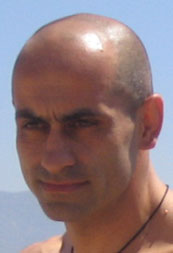|
|
 |
Charity – national offer
It is well known that in the orthodox monasteries, hospitals, nursing homes, pharmacies, hotels (as guest rooms) and orphanages, where poor and unfortunate people could find some help were functioning. In the period of slavery, they were the shelters of persecuted people and in the years of the War, they helped in its success in many ways. The general Makrigiannis calls them in his "Memoirs" as “the first bulwarks of our revolution”. He also says that in monasteries “there were also our powder-magazines and all the necessary things for the war" and for Monks, he marks that poor monks were sacrificed and killed to the revolution". The monks offered everything to the revolution, all the wheat and their barley and had nothing to seed. In a document of the Abbot of the Monastery of Saint Seraphim of Topo, Josef, dated 2nd February 1830, where he addresses to the Extraordinary Committee of Greece and which is saved in the General Files of Greece, we can read that the monastery offered even those quantities that were supposed to be used for the seeding, so they had nothing to seed and monks “were deprived of food”; for this reason, he asked “to give to the monastery the quantity of the seeds” in order to sow “some expedient properties”. Anastasios Goudas in the first volume of his work “Parallel Lives” (1872) marks: “Launched by the Greek revolution, the orthodox Lot, without changing or alleviating its religion devotion became an excellent soldier”.
However, there were many clergymen who greatly helped in the revolution and whom we do not mention here. In Great Spileo, for example, was the chiliarch Gerasimos Torolos and Ierotheos Petropoulos, apostle of Filiki Eteria (Society of Friends) in Peloponnese.
The preacher Pafnoutios was the first who went up to the fortresses of Nafplio on the night of November 30th, 1822. At various other battles, the monks who belonged to this Monastery shined: Damaskinos Papageorgiou abbot 1826, 1827, Simeon the doctor, Germanos Lambas, Parthenios Balanos, Pafnoutios Dimitriadis, Germanos Prilegas, Jonas Kanellopoulos, Samouel Dimopoulos, Arsenios Georgiadis, Damaskinos Polydoros, Samouel Katsaros, Pagkratios of Pappamenzelou and Ananias Athanassios; Neofitos Rouvalis, with eighty two soldiers and seven monks, reports Frantzis, remained in the Monastery and fought back against the attack of 2.500 pedestrians and horsemen for thirty six hour. Sixteen were murdered and twenty were injured and the monastery suffered a damage of 300.000 drachmas".
Close to Athens, in a completely green landscape, there is the eminent monastery of Kaisariani, which is very interesting for its architecture, its murals of the post Byzantine period, as well as for its history. Makrigiannis himself, in his document dated December 20th, 1834 writes for the Abbot Josef Tampakopoulos that: “he, along with the soldiers under his command succeeded in the capture of Falireas. I was always thankful for his patriotic beliefs and his bravery against the trials of our homeland”.
(Prvl. I. M. Hatzifoti: Clergymen Fighters of 1821, Athens 1984, p. 62).
The rebels of Chalkidiki, under the leadership of Emmanuel Papa, were also gathered and created a base in Agion Oros, along with young monks. The monastery of Esfigmenou was the base of each operation. In the monastery of Saint Lavra in Moria, the men at arms of Achaia were assembled in order to confer and the fighters of Fokida in the monastery of Prophet Elias in Amfissa as well. The temple of this monastery is really interesting, a masterpiece of woodcarving in the period of the Ottoman occupation.
|





